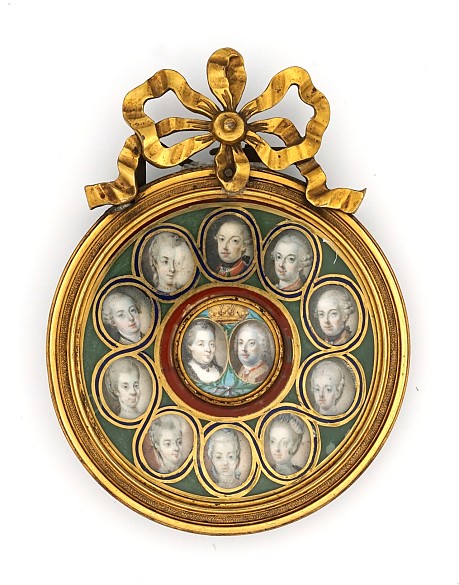Maria Theresa and Franz Stephan with their children
Miniature painting on ivory, circle of Antonio Bencini, 2nd half of the 18th century.
The fact that the choice of potential spouses in a dynastic environment was always determined by the current political situation can be perfectly illustrated by the Habsburg-Bourbon weddings in the 18th century.
Both dynasties were two ruling houses whose relationship was characterized by fierce competition, often referred to as “hereditary enmity”.
Under the slogan renversement des alliances (change of alliances), Maria Theresa initiated a diplomatic revolution in the 1750s: the feuding dynasties of Bourbon and Habsburg united to compete against their common opponents Prussia and England.
In the dynastic thinking of the time, the new strategic partnership required an exchange of children: the majority of Maria Theresa's children were systematically married to children of the various Bourbon lines that ruled in France, Spain, Naples-Sicily and Parma.
In order to strengthen the alliance between the dynasties, the tried and tested method of intermarrying children was resorted to. Thanks to her large number of children, Maria Theresia had a wide range of choices at her disposal. A real wedding carrousel ensued, which made Maria Theresa the “mother-in-law of Europe”.
Copyright











